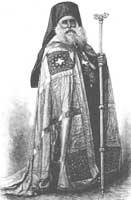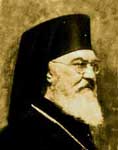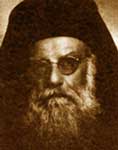.
Die folgenden Personen waren Bischöfe und Erzbischöfe von Athen (Griechenland):
Bischöfe von Athen
- Hierotheus vor 52
- Dionysius I. 52 –96
- Narcissus 117 –138
- Publius 161– 180
- Quadratus um 200
- Leonidas bis 250
- Olympius?
- Pistus um 325
- Clematius 4. Jh.
- Modestus ca. 431?
- Athanasius I. 451?–458
- Anatolius um 459
- Johann I. 5. Jh.
- Johann II. um 680
- Contias um 694
- Theocharistus um 702
- Marinus um 704
- Johann III. um 714
Metropoliten von Athen
- Gregor I. um 780
- Adamantius um 810
- Johann IV. um 819
- Theodosius 9. Jh.
- Hypatius 9. Jh.
- Demetrius I. 9. Jh.
- Germanus I. bis 841 (Erzbischof)
- Demetrius II. bis 846/857
- Gabriel I. bis 858/860
- Gregor II.?
- Cosmas?
- Nicetas I. |869/870 – 881?
- Sabbas I. um 881
- Anastasius bis 889
- Sabbas II. bis 914
- Georg I. bis 922
- Nicetas II. bis 927
- Konstantin bis 965?
- Philipp bis 981
- Theodegius um 1007
- Michael I. 1030
- Leo I. bis 1061
- Leo II. bis 1069
- Johann V. um 1087
- Nicetas III. bis 1103
- Nicephorus um 1112
- Gerasimus?
- Georg II. um 1156/7
- Nicholas I. 1166– - 1172?
- Michael II. 12. Jh.
- Theophylactus 12. Jh.
- Georg III. um 1172
- Georg IV. bis 1180
- Michael III. Choniates 1182–-1222?
- Meletius I. 1275– - 1289
- Elias um 1300
- Neophytus I. um 1336
- Anthimus I. bis 1366
- Nicodemus ab 1371
- Dorotheus I. um 1387
- Makarius I. um 1394/5
- Gerbasius 1432
- Phantinus 1440– - 1443?
- Theodor um 1453
- Isidore um 1456
- Dorotheus II. um 1472
- Anthimus II. um 1489
- Neophytus II. um 1492
- Lavrentius 1528–1546
- Callistus 1550– - 1564
- Sophronius I. 1565 –1570?
- Nicanor 1574– - 1592
- Theophanes I. 1592 –1597
- Neophytus III. 1597 –1602
- Samuel 1602
- Nathaniel 1602 –1606
- Anthimus III. 1606 –1611?
- Kyril I. 1611–1619?
- Metrophanes 1619– - 1620?
- Theophanes II. 1620?–1633
- Sophronius II. 1633– - 1636
- Daniel 1636– - 1665
- Anthimus IV. 1665 –1676
- Iakovos I. 1676– - 1686
- Athanasius II. 1686– - 1689
- Makarius II. 1689– - 1693
- Anthimus V. 1693 – 1699
- Kyril II. 1699– - 1703
- Meletius II. 1703 –1713
- Iakovos II. 1713 – 1734
- Zacharias 1734 – 1740
- Anthimus VI. 1741 –1756 (Erste Amtszeit)
- Vakant
- Anthimus VI. 1760 –1764 (Zweite Amtszeit)
- Bartholomäus 1764 –1771? (Erste Amtszeit)
- Neophytus IV. 1771?–1775
- Bartholomäus 1775 –1780 (Zweite Amtszeit)
- Gabriel II. 1781?
- Benedikt 1781 - 1785 (Erste Amtszeit)
- Athanasius III. 1785 – 1787 (Erste Amtszeit)
- Benedikt 1787– - 1797? (Zweite Amtszeit)
- Athanasius III. 1797?–1799 (Zweite Amtszeit)
- Gregor III. 1799– - 1820
- Dionysius II.1820 – 1823
- Vakant
- Gregor IV. 1827 – 1828
- Anthimus VII. 1828– - 1833
einseitige Erklärung der Autokephalie am 23. Juli 1833 und offiziell bewilligt durch das ökumenische Patriarchat von Konstantinopel am 29. Juni 1850
- Neophytus V. (Νεόφυτος)1833– - 1861
- Michael IV. 1861– - 1862
- Theophilus 1862– - 1873
- Antonios 1873– - 1874

- Prokopius I. 1874 –1889
- Germanus II. 1889 –1896
- Prokopius II. 1896 –1901
- Theocletus I. 1902– - 1917 (Erste Amtszeit)

- Meletius III. (Μελέτιος)1918– - 1920
- Theocletus I. 1920– - 1922 (Zweite Amtszeit)
Erzbischöfe von Athen

- Chrysostom I. 1923 – 1938
- Chrysanthus 1938– - 1941

- Damaskenus ( Δαμασκηνός ) 1941 – 1949
- Spyridon (Σπυρίδων )1949– - 1956

- Dorotheus III. (Δωρόθεος) 1956– - 1957
- Theocletus II. 1957– - 1962

- Iakovos III. (Ιάκωβος)13-25 Januar1962
- Chrysostom II. 1962 – 1967

- Hieronymus 1967– - 1973
- Seraphim (Σεραφείμ) 1973– - 1998

- Christodoulos (Χριστόδουλος) seit Ostern 1998 -28.1.2008
Siehe auch
| Antikes Griechenland
Biographien, Griechische Mythologie , Kriegführung, Kunst, Architektur, Wissenschaft, Philosophie, Literatur, Sport, Leben, Geschichte, Index, Bilder/Zeichnungen Griechenland im Mittelalter Byzanz, Biographien, Kunst, Literatur, Orthodoxie, Byzantinische Armee, Geschichte, Index Griechenland in der Neuzeit Geographie, Inseln, Städte, Kunst, Musik, Biographien, Film, Sport, Wissenschaft, Literatur, Geschichte, --- Hellenica Bibliothek - Scientific Library Index Griechisch: Αλφαβητικός κατάλογος |
Der Text ist unter der Lizenz „Creative Commons Attribution/Share Alike“ verfügbar; zusätzliche Bedingungen können anwendbar sein. Einzelheiten sind in den Nutzungsbedingungen beschrieben.
